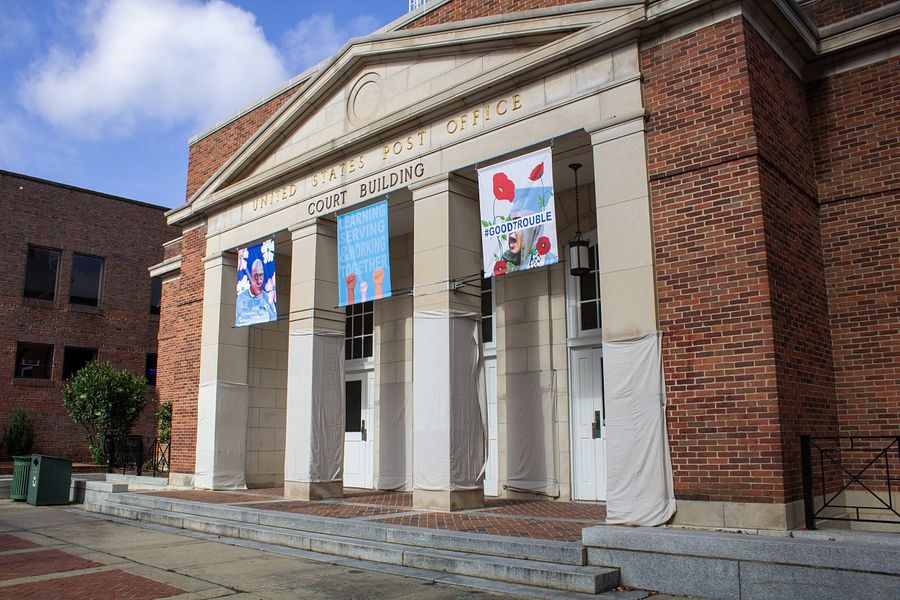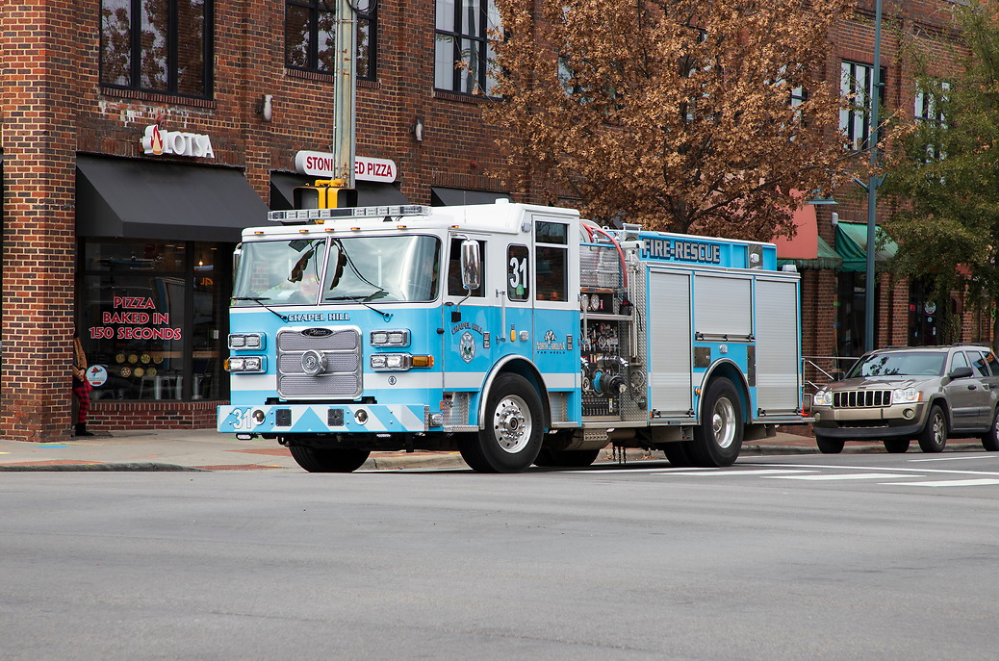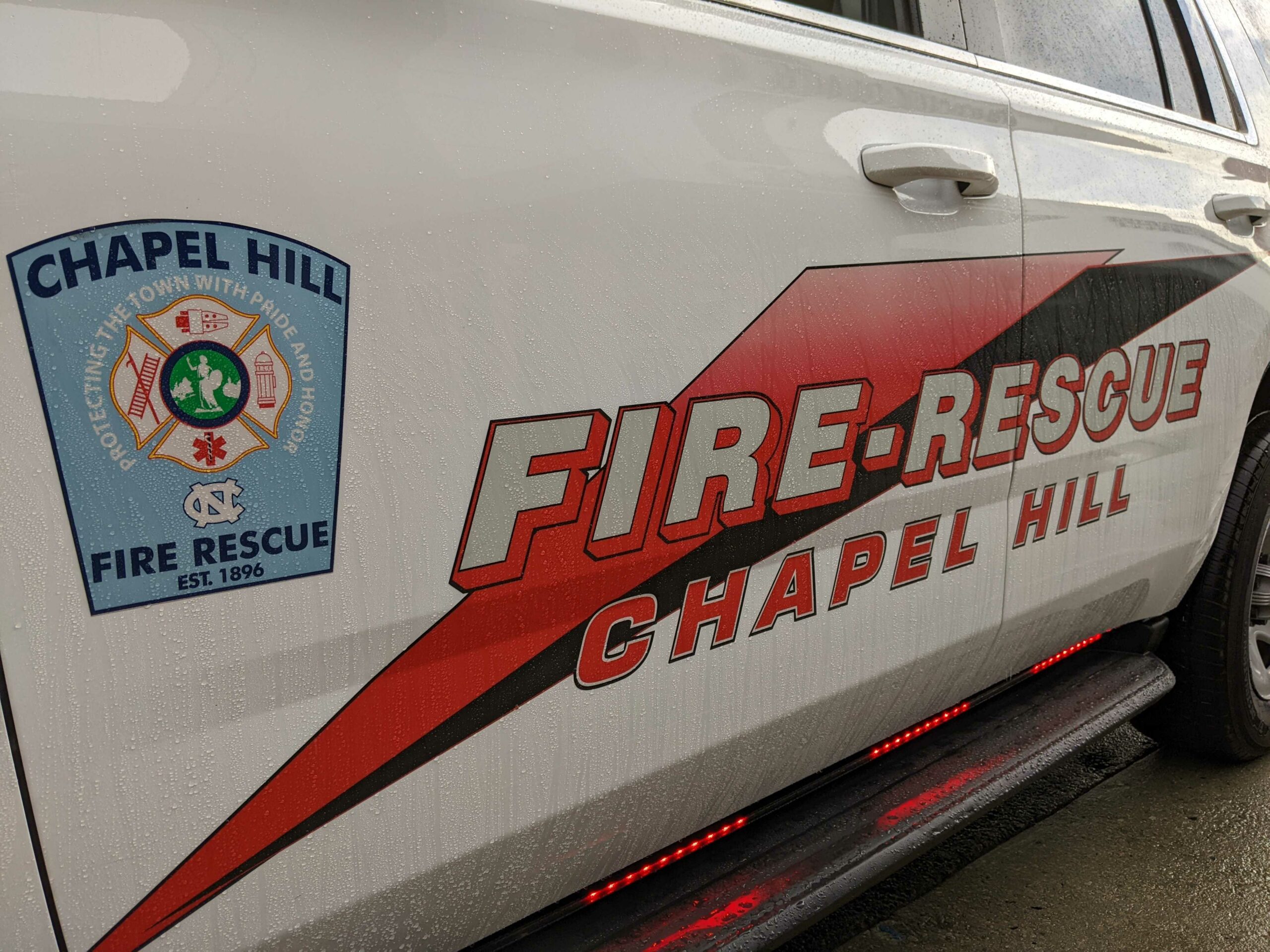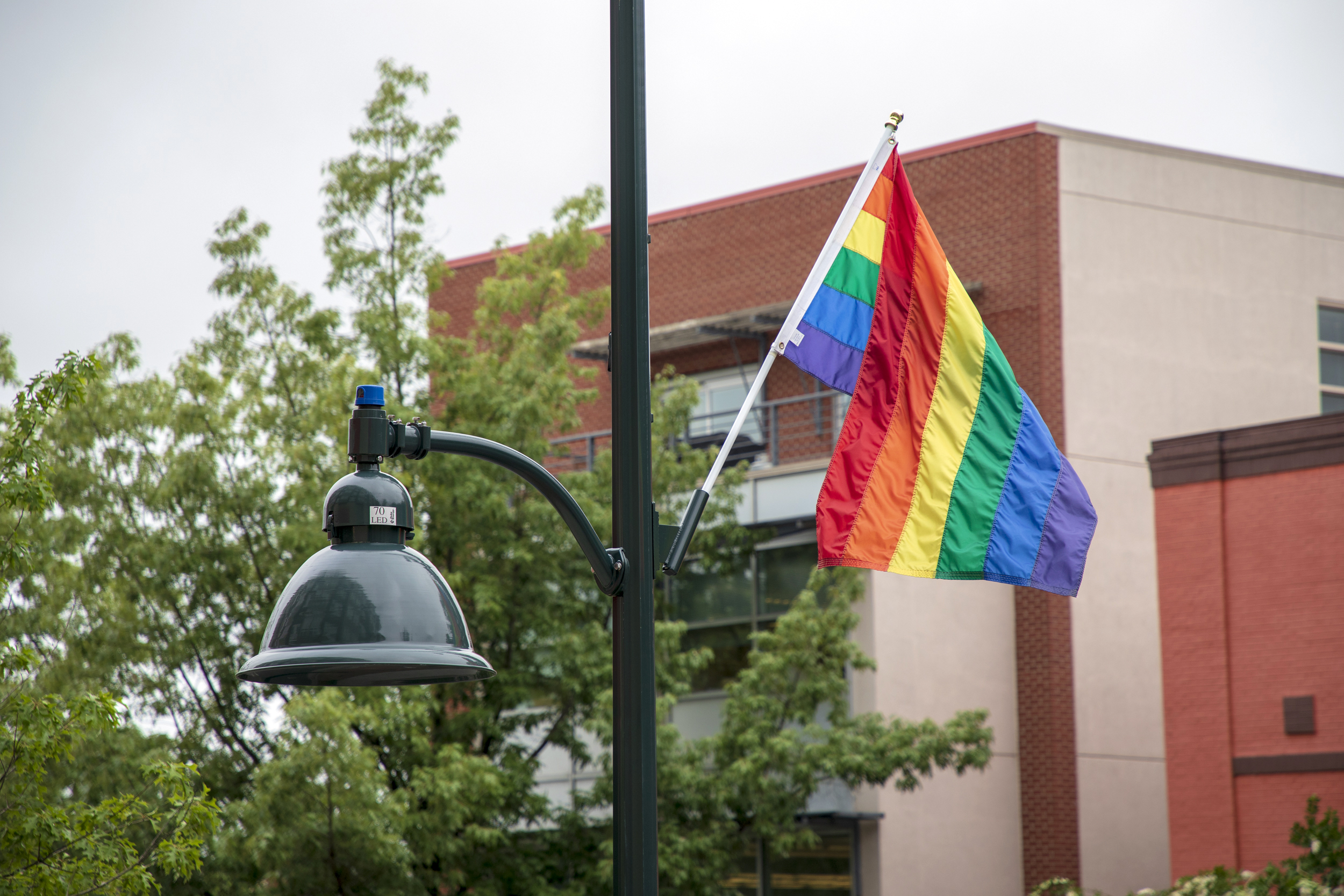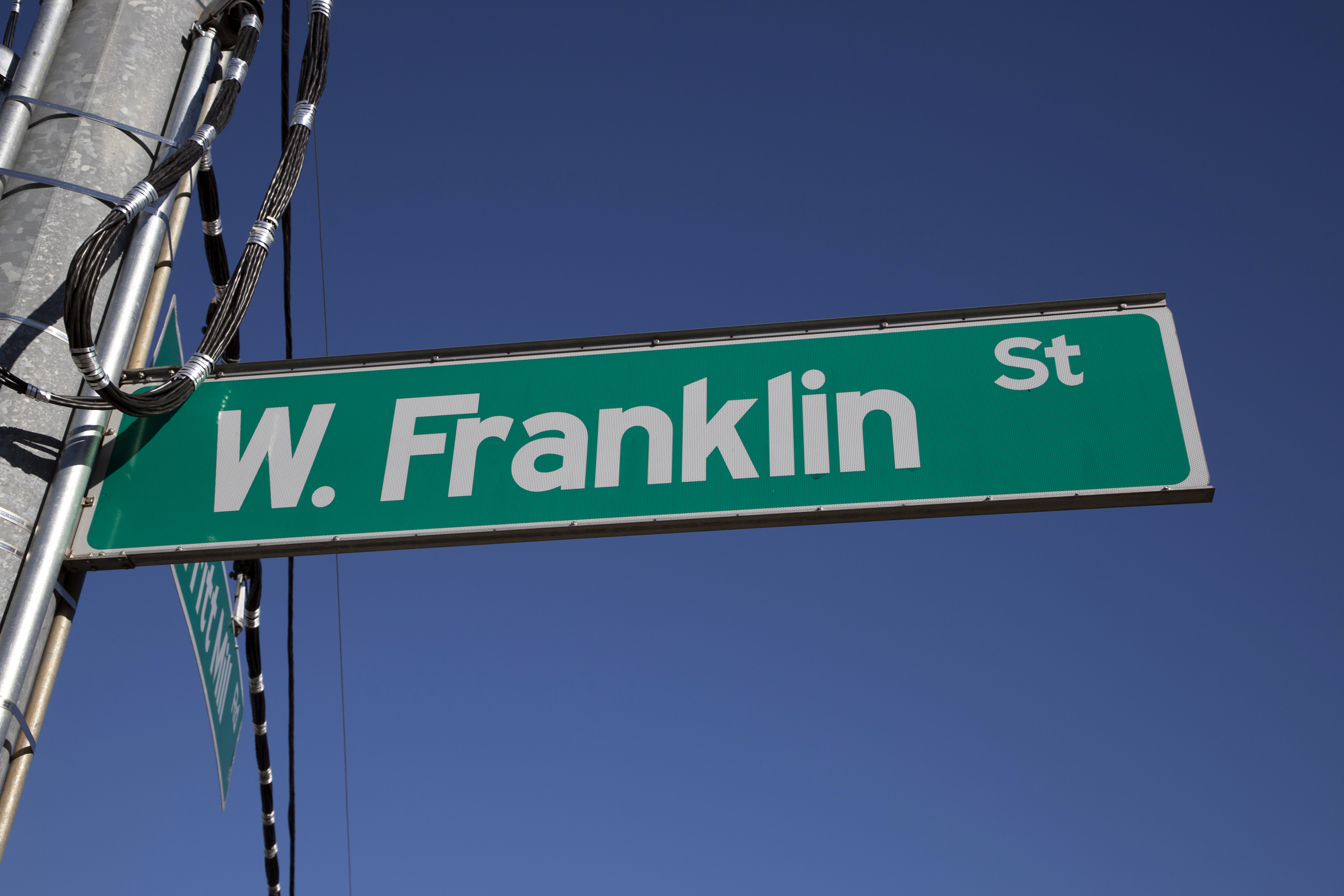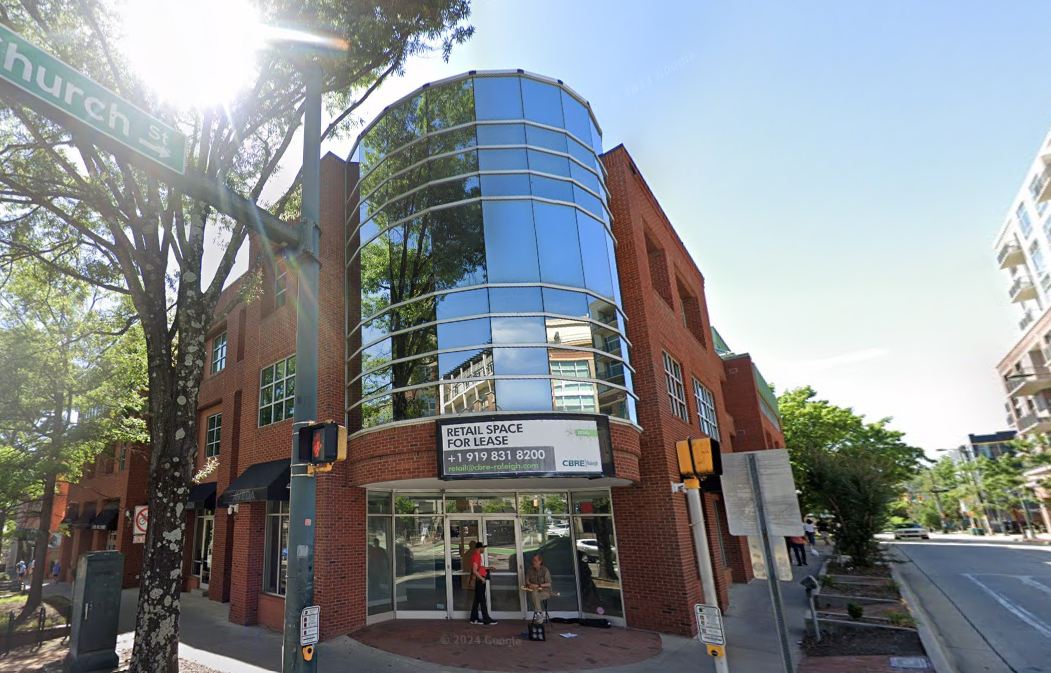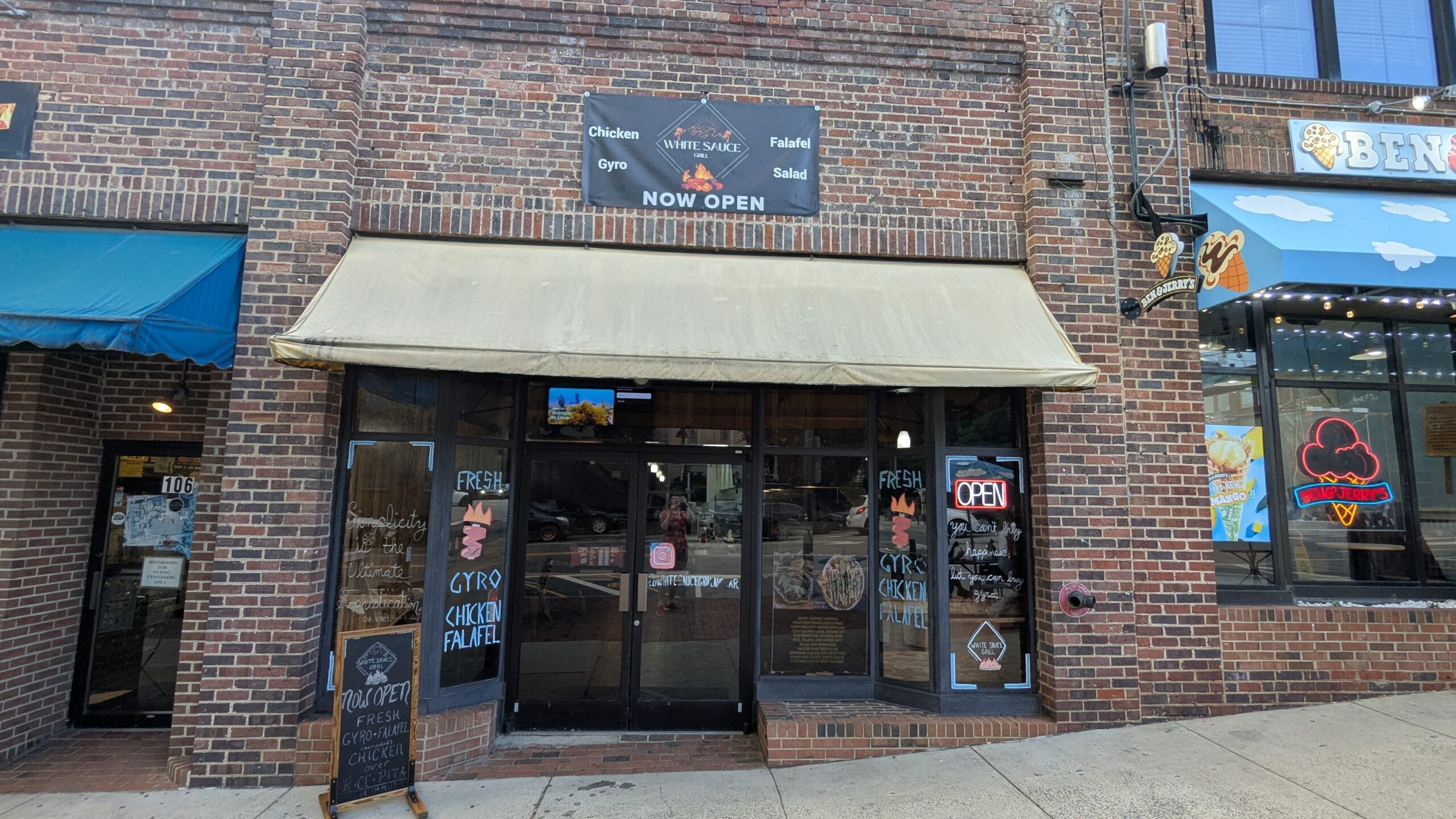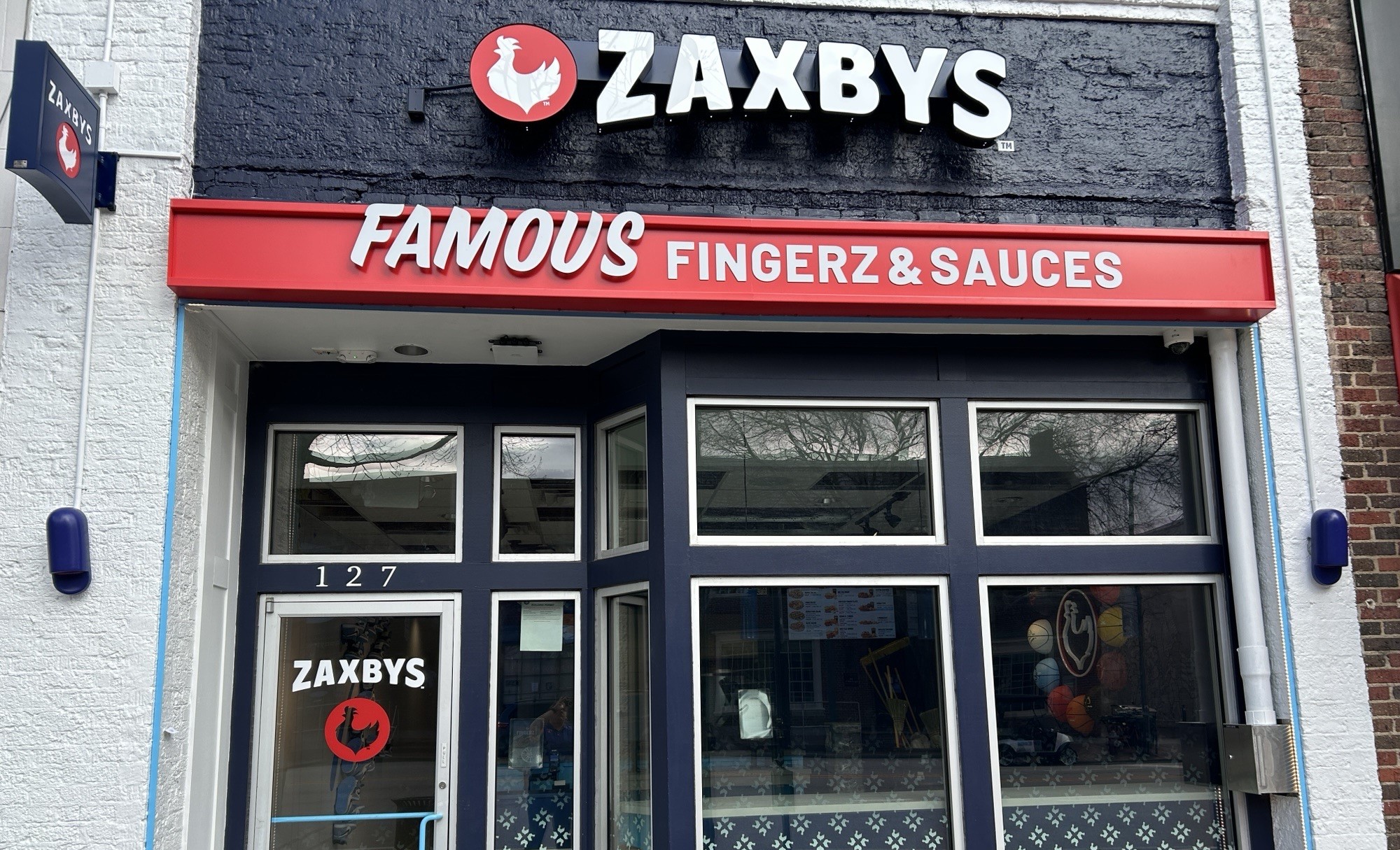For the last few years, the Town of Chapel Hill has featured artistic banners at the Peace & Justice Plaza at 179 East Franklin Street — using the space between the Old Post Office’s columns to hang them.
On Wednesday, a newer trio of banners came down amid blowback of the artwork’s meaning and tension around the ongoing war in Gaza.
A release from Chapel Hill Town Manager Chris Blue said the town government has removed the latest series, called “The Power of Good Trouble.” The artwork from Sadie Rose, a visual artist based in Rocky Mount, N.C., was raised at the site on Oct. 16, according to the town government. But the inclusion of a person wearing a keffiyeh scarf — recognizable for its black-and-white pattern and association with pro-Palestine demonstrations — led to pushback from dozens of community members and social media users.
In the town’s Instagram post about the display, commenters flooded the post with criticism. Similarly, Chapel Hill’s elected officials received hundreds of emails about the artwork, most of which were in favor of removing the banners. Much of the criticism stemmed from the belief the scarf detail represents antisemitic sentiments or could conflate support of Hamas’ attack on Israelis last October with the values of civil rights figures like the late Congressman John Lewis and local activist James “TT” Foushee, who is also featured on the banners.
In her artist statement for “The Power of Good Trouble,” Rose described the third banner as “a graduate, adorned in their blue cap and gown, defiantly protesting, embodying the spirit of courage and determination we’ve witnessed from some community members.” She adds in the description that the three images together “evoke the essence of the ongoing struggle for racial justice, each element a testament to the indomitable spirit of those who dare to challenge the status quo.”
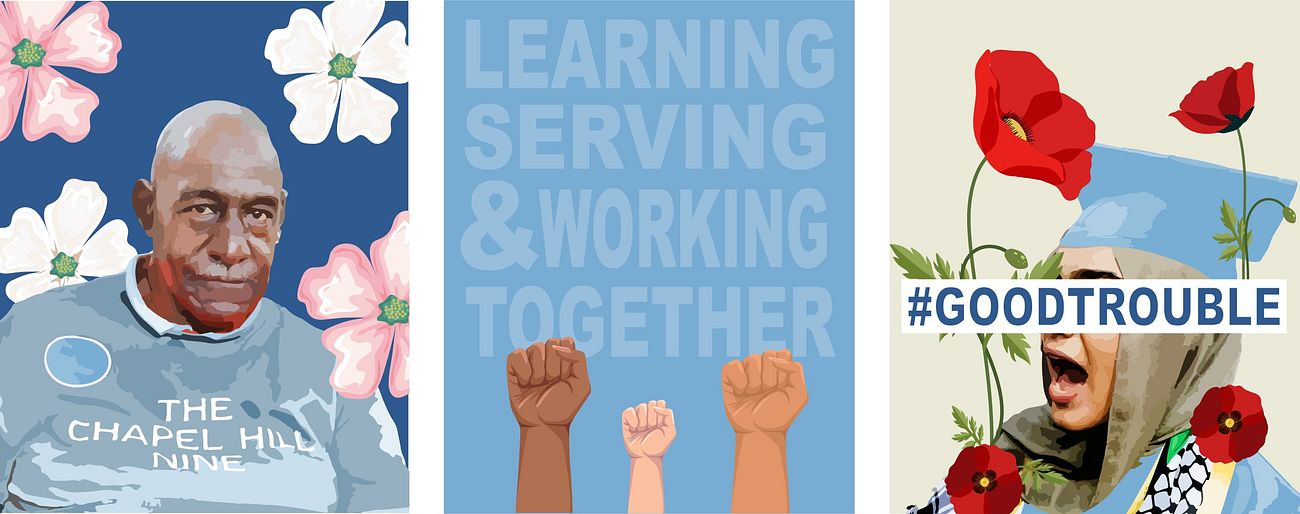
A graphic of the trio of banners making up “The Power of Good Trouble.” (Photo via the Town of Chapel Hill, artwork via Sadie Rose.)
Blue said in his statement on Wednesday the town has welcomed and listened to feedback on the piece in recent days, recognizing that public art is meant to be thought-provoking. But the town manager added that he believes it reached a point where the banner is “causing harm.”
“We’ve heard from many in our community that the display is painful to encounter,” he wrote. “Intentional or not, the piece is evoking strong feelings for many about the conflict between Palestine and Israel, especially for those who are close to Chapel Hill native, Keith Siegel, who remains in captivity in Gaza.
“We’ve also heard that this display is causing deep division in our community,” Blue continued. “And while we as a community don’t always agree, we should always strive to lessen – rather than deepen – divisions.”
The ongoing war between Israel and Hamas, as well as the simultaneous humanitarian crisis in Gaza, has led to several flashpoints of disagreement among the greater Chapel Hill community over the last year. In addition to high-profile demonstrations on UNC’s campus — which resulted in student arrests and the university facing criticism of its police response — gatherings on both sides of the issues have been organized to promote support for the Jewish and Palestinian communities affected by the violence. The Town of Carrboro’s council saw itself become a microcosm of the division within the area, as its elected officials voted 4-3 to pass a resolution calling for a ceasefire in the war last November.
The artwork series at the plaza is through the town’s Community Arts & Culture division, which takes submissions from artists who create work around the themes of peace and justice, according to Blue. All submissions are reviewed and finalists are selected through a team of community stakeholders, who then request full design proposals and pick one design from the finalists.
Rose’s creation company Thymeless Art Co. shared a statement with Chapelboro on Wednesday, saying a commitment to fostering inclusive and respectful dialogue for all communities remains vital with the banners’ removal.
“It is important to unequivocally state that this artwork does not, in any way, target or criticize Jewish people or Judaism,” read the statement. “It does not contain any symbols, language, or messaging that convey antisemitic ideas. On the contrary, its purpose is to uplift the values of justice and unity across all communities, while standing firmly against antisemitism and all forms of discrimination.”
Blue said on Wednesday he hopes the removal of the display will better allow conversations to take place, saying he believes the Chapel Hill community is capable of having discussions despite “challenging topics and raw emotions.”
“I know that many of you will have strong feelings about the art coming down, just as many had strong feelings about the art going up,” he added. “Please continue to share your feedback with me and our team will continue to listen.”
Demonstration at Town Council Meeting
Several community members spoke out against the removal of “The Power of Good Trouble” at Wednesday’s Chapel Hill Town Council meeting. There was nearly an hour of public comment largely dedicated to the issue, as dozens of community members showed up to speak on both sides of the removal – although most shared pro-Palestine perspectives and criticized taking down the artwork.
Chapel Hill Mayor Jess Anderson said she has received more than one thousand emails in the last week regarding the banners, some of which include death threats and other intimidating comments. She said those who want a different future for this community, everyone needs to do the hard work of participating in constructive dialogue between those with opposing views.
“What I hope, for all of us, is that we take the radical step of speaking to each other,” said Anderson. “There is hard work to do of starting and sustaining dialogue. Given the sentiments we’ve been hearing tonight, and in the more than thousand emails that we’ve gotten in the past few days, some may not be ready. But for those who want a different future for this community, the world and our children’s future, I encourage each of us to start doing the hard work that healthy, complicated, diverse and multi-cultural communities require.”
The mayor also said she believes more needs to be done to clarify and make transparent the town’s processes in choosing such public art – and that the method of choosing such work ought to have a higher level of scrutiny.
“I think the artist should be commended for her artistry and her message, and I think she’s owed an apology for [us] commissioning her work in the first place and then taking it down. I also believe that private citizens should be encouraged to share perspectives of all sorts, and have the freedom to do so.
“What the town commissions and chooses to put on public property is a much different proposition, for me,” she added. “It requires careful decisions, transparency, and the best interest of the community as a whole.”
During Anderson’s reading of the statement, several members of the audience shouted interruptions or objections, eventually leading a chant and leading a walk-out of supporters of the artwork.
Video of the meeting and the public comments shared can be found here.
Editor’s Note: A previous version of this story said “The Power of Good Trouble” was raised at Peace & Justice Plaza in November. That has since been corrected to Oct. 16.
Featured photo via the Town of Chapel Hill.
Chapelboro.com does not charge subscription fees, and you can directly support our efforts in local journalism here. Want more of what you see on Chapelboro? Let us bring free local news and community information to you by signing up for our newsletter.

